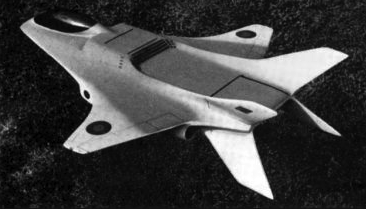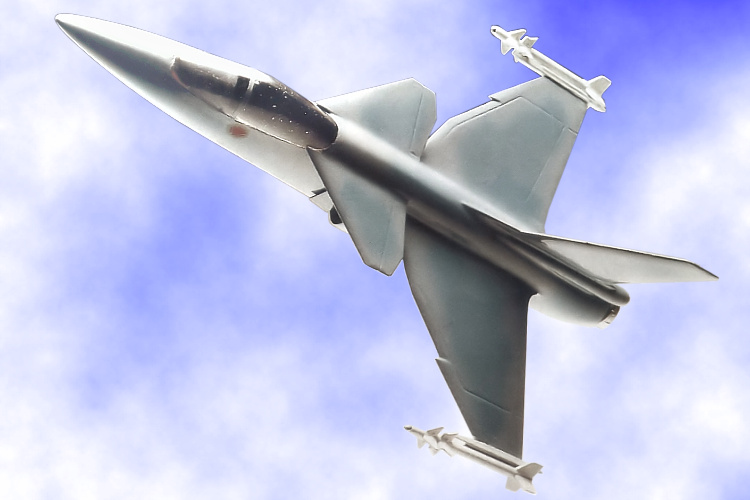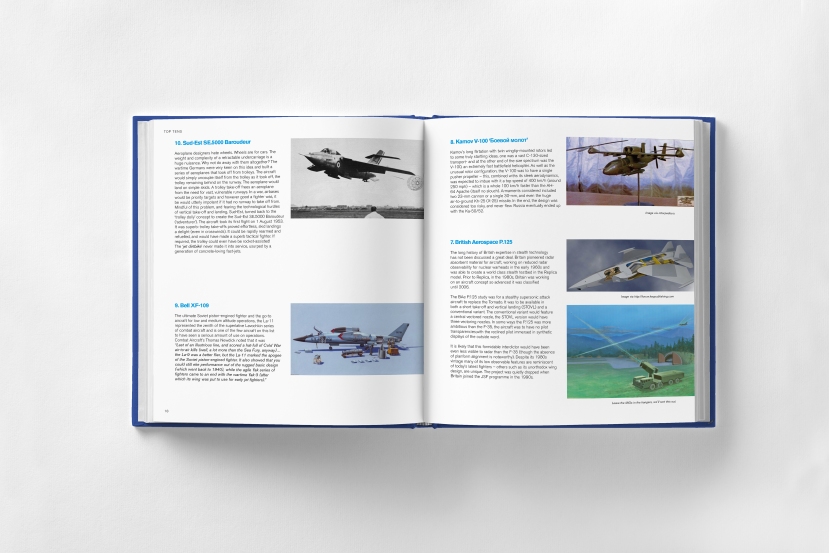10 exotic cancelled fighter planes from countries you didn’t expect

Pariah states and those seeking independence from the traditional plane-making nations have repeatedly attempted to go it alone and built their own fighter aircraft. All of the following projects, many tantalisingly close to being brilliant, failed. Some were crushed by spiralling project costs, some by bad timing and some by death threats!
10. FMA Pulqui II (1950)

Kurt Tank, who developed the Fw 190 and other design masterpieces for Nazi Germany, fled his defeated homeland to work in Peron’s Argentina. Here he was involved in several bizarre projects (including a possibly fraudulent nuclear fusion-powered airliner which will be covered on hushkit.net soon), including the Pulqui II, an indigenous jet fighter based on the unflown Ta 183. Whereas the Pulqui I was a disappointing straight-wing fighter prototype designed by Émile Dewoitine, the II was far more ambitious: a swept-wing fighter powered by the British Nene II. With a top speed of 671 mph and an armament of four-20mm the aircraft had the potential to be one of the most capable fighters of its time, though the similarly Nene powered MiG-17 also flew in 1950 and was 40mph faster. The Pulqui II was successfully deployed in combat trials in the Revolución Libertadora. The type was cancelled due to long-running programme failures and a failing national economy.

9. FMA SAIA 90

An extremely far-sighted and in many ways brilliant concept, the SAIA 90 had the misfortune of being born in the wrong country. A stealthy (with consideration being paid to both radar and infra-red conspicuity) agile fighter powered by two F404s is an idea so appealing it would still find buyers today. It was to have a Low Probability of Intercept radar, one 27-mm Mauser cannon and six air-to-air missiles (four medium ranged radar-guided and two short-range infra-red guided).

Design assistance for the Argentinian company Fabrica Militar de Aviones came from the West German company Dornier (whose experience with composites on the Do 228 and AlphaJet would be vital for the project). The project would have been ambitious for any nation, but for Argentina, which was in the grip of an economic meltdown, it was just too much — and it was cancelled.

Exactly how stealthy an aircraft with such a blocky fuselage and oversize control surfaces is worth questioning.
Like this kind of thing? 10 incredible cancelled military aircraft here
8. Australian Commonwealth CA-15 ‘Kangaroo’

A strong contender for the title of the ultimate piston-engined fighter is the Australian Commonwealth CA-15 ‘Kangaroo’. The RAAF wanted a fighter superior to the highly respected P-51 Mustang, so accordingly issued an exceptionally demanding requirement. The specification called for a machine with a high rate of climb, excellent manoeuvrability including a high roll rate, and a generous range. The resultant Kangaroo delivered on all promises, and boasted a top speed of 458mph, and a range on internal fuel of 1,150 miles! The addition of drop tanks allowed for 2,540 mile flights. These remarkable figures were attained with the Griffon 61, even more impressive figures would have been achieved if the desired Double Wasp or three-speed Griffon had been fitted. Like the MB5 it was just too late to the party.
7. Helwan HA-300 (1964)

In the mid 1950s Egypt wanted a lightweight supersonic, single-seat fighter-intercepter. Depending on the now hostile Britain for military aircraft was impossible and President Nasser also wished for the prestige and independence of an indigenous solution.

Wilhelm Emil ‘Willy’ Messerschmitt, designer of the Bf 109, banned from designing military aircraft in Germany, came to their assistance. In collaboration with India and Spain, the sleek HA-300 was created. The aircraft attained Mach 2.1 with indigenous Brandner E-300 engines.

It is uncertain exactly why the project was cancelled but it was having financial and technical problems, and the German engineers were receiving death threats from Mossad. 
6. Qaher-313

Voted in the 2013 world fighter yearbook ‘least likely project to come to fruition and most dishonest PR‘, the Iranian Qaher-313 was something of a joke in international media. Extremely silly claims were made of this aircraft – and the subscale mock-up claiming to be an actual aircraft was widely derided. The project continues, though the public statement have become more modest. Far from being the F-35 killing superfighter described in 2013, it is now reported as a short range close air support aircraft. It is unclear whether it has yet flown.
We have big plans! We exist today thanks to our reader’s generous donations, it’s a team effort and you are a vital part. The next step is a regular podcast featuring interviews with famous pilots, histories of obscure aircraft types, aviation satire and the latest news. We want to entertain you at home or on your way to work. To do that we need more funds. Please donate here and let’s make this happen!
5. IML ADDAX

One free-thinking group of aircraft designers considered how to make a new multirole fighter. The result of the study was a design for an aircraft like nothing else before or since. Even more surprisingly, this exciting plan for a futuristic superfighter came not from the elite fighter houses of the USSR or the US, but an unknown company in New Zealand.
From the late 1970s, the IML Group in New Zealand studied existing combat aircraft to see if they could come up with a better solution. Their concept, the Addax, proved to be exceptionally bold. The Addax-1 was to be powered by two vectored thrust turbofans in the 10,000-Ib thrust class (obvious contenders would have included derivatives of the Rolls-Royce Spey or TF34).
A world where the British super-bomber wasn’t cancelled here

The aerodynamic configuration was unusual to say the least, consisting of a ‘self-stabilising aerofoil’ formed by the fuselage between the tailbooms, with upper surface blowing across all lifting surfaces providing the aircraft with extreme short take-off and landing capabilities.

Internal weapon bays could carry up to ten 1,000-Ib bombs and external pylons could carry an additional 3,000 Ibs. The gun armament would have been ferocious, comprising either four 30-mm Oerlikon cannon or two 20-mm M61A1 Vulcans. Maximum speed would have been 740mph, and it would had a lo-lo-lo tactical radius of 480 miles with maximum bombload.

The Addax-S was even more impressive. This was a supersonic air-superiority fighter based on the same configuration, with outstanding manoeuvrability.
Of course, The New Zealand Government was never really going to fund either Addax, but it was an intriguingly left-field glimpse of how fighters could have evolved. The designs were released in 1982, but even today they appear more futuristic than any known aircraft programme.
The Italian supersonic jump-jet that never was, here
4. PZL-230 Skorpion

A mid ’80s Polish requirement for a small, agile battlefield attack aircraft resulted in the PZL-230F. Looking like a Manga cartoon of a SR-71, it was actually a serious design with an emphasis on survivability, ease of use and economy of operation. Slow (around 400mph) and capable of forward basing it would have offered a flexible close air support capability. Armament would have consisted of a gun (possibly the GAU-12 rotary cannon) and a light load of guided and unguided munitions.
 Initially a degree of stealth was desired, but later in the programme it was decided that this was a redundant quality in an aircraft operating so close to the frontline it would be visible with naked eyes. Its rivals were the IL Kobra 2000 and PZL Mielec M-97/M-99ch. Several configurations of the PZL-230 were offered with turbojet, turboprop and turbofan engines. The 230 won the contest and some development work was done, but it was unsustainable, as Poland faced the economic crisis of transitioning from communism to capitalism. It was terminated in 1994, never having reached a flyable prototype stage.
Initially a degree of stealth was desired, but later in the programme it was decided that this was a redundant quality in an aircraft operating so close to the frontline it would be visible with naked eyes. Its rivals were the IL Kobra 2000 and PZL Mielec M-97/M-99ch. Several configurations of the PZL-230 were offered with turbojet, turboprop and turbofan engines. The 230 won the contest and some development work was done, but it was unsustainable, as Poland faced the economic crisis of transitioning from communism to capitalism. It was terminated in 1994, never having reached a flyable prototype stage.


  |
3. Atlas Carver

Thanks to its horrific apartheid system that enshrined racism and inequality into law, the outside world eventually refused to provide military aircraft to South Africa. In the 1980s, the pariah nation required a high performance lightweight fighter to counter threats that included Angola’s MiG-23s. The design resembled the Mirage 2000, but with splitter plates (some versions showed F-15-like ramps) rather than shock-cones, and LERX resembling those of the the F/A-18 Hornet.
Sadly, we are way behind our funding targets. This site is entirely funded by donations from people like you. We have no pay wall, adverts (any adverts you see on this page are not from us) or subscription and want to keep it that way– please donate here to keep this site going.

It was to incorporate composite materials and be armed with indigenous weapons. Some design iterations showed single engines and some a twin arrangement. It is likely that it would have featured a helmet mounted sight, this being a technology South Africa led the world in. The nation did not have the know-how to build its own jet engines and instead unsuccessfully attempted to acquire French M53s and designs for the M88 by subterfuge, and it was stuck with the elderly Snecma Atar.
 Meeting payload-range requirements with this old engine proved very hard and the project was also very expensive; with a diminished threat this could not be justified and the project was canned in 1991. As the political system changed, military imports became available and the SAAF chose the Swedish SAAB Gripen.
Meeting payload-range requirements with this old engine proved very hard and the project was also very expensive; with a diminished threat this could not be justified and the project was canned in 1991. As the political system changed, military imports became available and the SAAF chose the Swedish SAAB Gripen.
Top 11 cancelled French aircraft here
2. ALR Piranha 6 ‘Swiss multi-roll’
 Yet another ‘eurocanard‘ that never was, the Piranha was a Swiss mini-fighter project that started in 1977. The idea was to produce a fighter for nations on a tight budget, and it seemed a sensible enough idea.
Yet another ‘eurocanard‘ that never was, the Piranha was a Swiss mini-fighter project that started in 1977. The idea was to produce a fighter for nations on a tight budget, and it seemed a sensible enough idea.
 It was very small and very light, to put it into context its planned max take-off weight of 6,900kg was around half that of the lightest true fighter in production, the Gripen (which is only marginally heavier than the KAI FA-50). There was several proposed variants of the Piranha. But an earlier concept of the Piranha was even lighter…powered by a single Adour!
It was very small and very light, to put it into context its planned max take-off weight of 6,900kg was around half that of the lightest true fighter in production, the Gripen (which is only marginally heavier than the KAI FA-50). There was several proposed variants of the Piranha. But an earlier concept of the Piranha was even lighter…powered by a single Adour!

Unlike today’s eurocanards the foreplanes featured full length flap à la Viggen, which would have aided short field performance. Whether it could have carried enough fuel to get to the promised Mach 2.2 top speed is a good question, as is why the RB199, with its lamentable performance above low altitude, was chosen over the Hornet’s F404. It was expected to be armed with one Oerlikon KCA 30-mm cannon and two Magic II or ASRAAM missiles. ALR was a well-run private company self-funding the project but they eventually gave up due to a lack of interest from the Swiss government.
10 Incredible Soviet Fighter Aircraft that never entered service here

- Soko Nadzvučni Avion

Yugoslavia remained neutral throughout the Cold War, a complicated and remarkable position considering its location. By the 1980s, it had obtained production licences or self-designed all major weapon systems apart from a supersonic high-end fighter aircraft. For this it required international assistance and looked around for possible partners (one of the collaborators it considered was BAe with their abortive Gripen-like P.106). Dassault and the French Government stepped into the project, resulting in the aircraft becoming essentially a mini Rafale. Engines under consideration were the PW1120, GE404, the Turbo Union RB199 and Snecma M88. Of these, the RB199 was probably the least likely — and the M88 the most. The Civil War, starting in 1991, put paid to the Avion.
 If developed, the type would have likely replaced MiG-21s and complemented the MiG-29 force — it could have been a very potent aircraft comparable to the Saab Gripen as an advanced fourth generation lightweight fighter.
If developed, the type would have likely replaced MiG-21s and complemented the MiG-29 force — it could have been a very potent aircraft comparable to the Saab Gripen as an advanced fourth generation lightweight fighter.

We have big plans! We exist today thanks to our reader’s generous donations, it’s a team effort and you are a vital part. The next step is a regular podcast featuring interviews with famous pilots, histories of obscure aircraft types, aviation satire and the latest news. We want to entertain you at home or on your way to work. To do that we need more funds. Please donate here and let’s make this happen!
Hush-Kit would like to give a special thanks to Thomas Newdick for his kind assistance in creating this
I’ve selected the richest juiciest cuts of Hush-Kit, added a huge slab of new unpublished material, and with Unbound, I want to create a beautiful coffee-table book. Pre-order your copy now right here

This book can only happen with your support. Preorder your copy today here.

From the cocaine, blood and flying scarves of World War One dogfighting to the dark arts of modern air combat, here is an enthralling ode to these brutally exciting killing machines.
The Hush-Kit Book of Warplanes is a beautifully designed, highly visual, collection of the best articles from the fascinating world of military aviation –hand-picked from the highly acclaimed Hush-kit online magazine (and mixed with a heavy punch of new exclusive material). It is packed with a feast of material, ranging from interviews with fighter pilots (including the English Electric Lightning, stealthy F-35B and Mach 3 MiG-25 ‘Foxbat’), to wicked satire, expert historical analysis, top 10s and all manner of things aeronautical, from the site described as:
“the thinking-man’s Top Gear… but for planes”.
The solid well-researched information about aeroplanes is brilliantly combined with an irreverent attitude and real insight into the dangerous romantic world of combat aircraft.
FEATURING
- Interviews with pilots of the F-14 Tomcat, Mirage, Typhoon, MiG-25, MiG-27, English Electric Lighting, Harrier, F-15, B-52 and many more.
- Engaging Top (and bottom) 10s including: Greatest fighter aircraft of World War II, Worst British aircraft, Worst Soviet aircraft and many more insanely specific ones.
- Expert analysis of weapons, tactics and technology.
- A look into art and culture’s love affair with the aeroplane.
- Bizarre moments in aviation history.
- Fascinating insights into exceptionally obscure warplanes.

The book will be a stunning object: an essential addition to the library of anyone with even a passing interest in the high-flying world of warplanes, and featuring first-rate photography and a wealth of new world-class illustrations.





I had a book in the 90s called Jet Warplanes The 21st Century, which featured an aircraft looking a lot like the Addax but described as the Phalanx MP18 Dragon. It was a great read, full of concept art from the ATF and LHX programmes. Do you have any information about Phalanx? My understanding is that they were essentially con men.
Regarding the HA-300, my understanding is that Hispano Aviación sold the project quite developed to the Egyptians, alongside Willy Messerschmitt previous work with Hispano (the HA-200). Lack of funds in Spain to keep developing it further prompted the decision.
HA-300 sold the project which was a dual nation project entirely to the Egyptians, who were under great pressure by The Soviets to end it. In the end the so called 6 day war put an end to it with the destruction of EAF resulted in Egypt needing immediate supply of aircraft which the Soviets were only to willing to supply.
The Egyptians also built the earlier HA-200 which was a totally Spanish project.
Hi.
The Ha-300 project ends with the bombing from Israel of the HA-200 factory in Egypt. This event cuts the collaboration between Spanish Hispano Aviation company and Egypt company.
Regards
Hi,
Very interesting projects indeed! Please consider also the Sagittario/Ariete/Leone series of jet fighters from Italian company Aerfer, back in the ’50s (sorry for the links in Italian)
https://it.wikipedia.org/wiki/Aerfer_Leone
http://www.fremmauno.com/2012/11/i-supersonici-della-aerfer.html
Lol, the Addax looks like Thunderbird 2
Lol, the Addax looks like Thunderbird 2
Hey buddy. You got the South African Atlas carver completely wrong. The image you’ve shown is the Real Atlas Cheetah fighter jet which was successfully manufactured and operational.
The true Atlas carver looks more like an F 16. Was being designed and built with the covert assistance of the Israeli’s.
Hi Andrew, which image do you believe to be the Cheetah? I think you may be mistaken. I haven’t seen any F-16-like concepts relating to the Carver, do you have any sources you can share? I think you may be thinking of the Lavi. Kind regards, HK
You forgot the I.A.R. 95 https://en.wikipedia.org/wiki/IAR_95